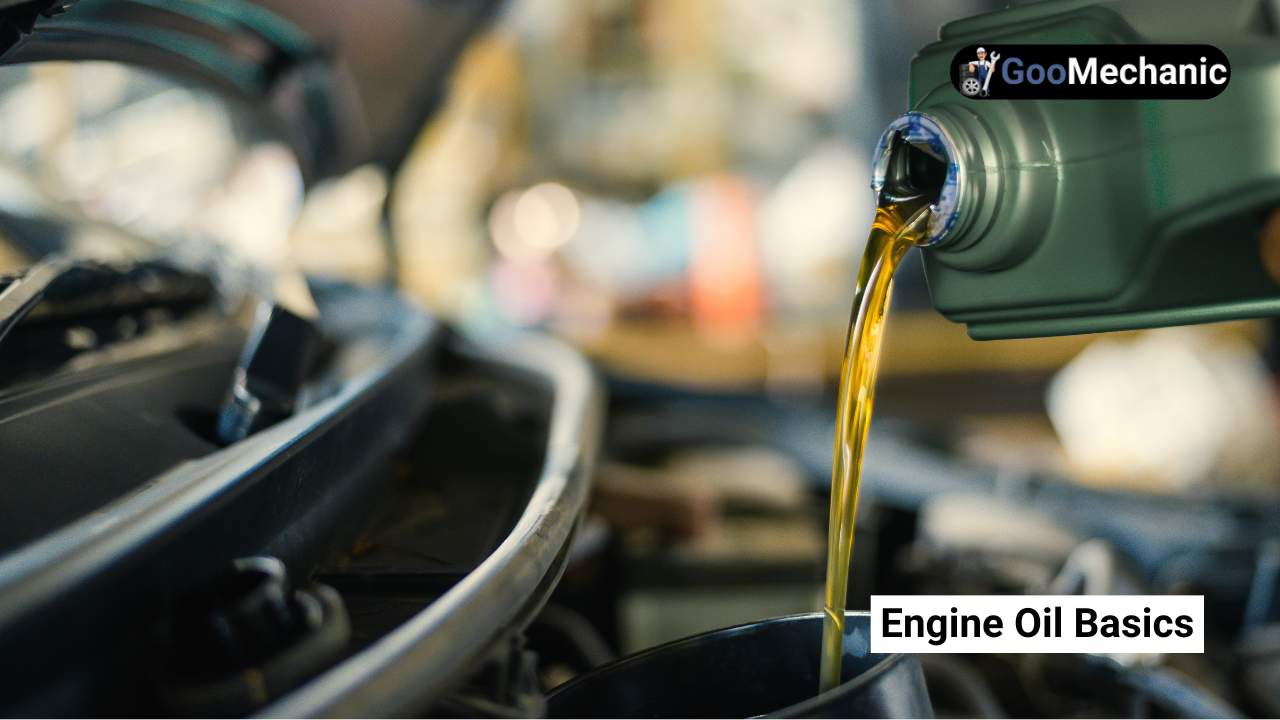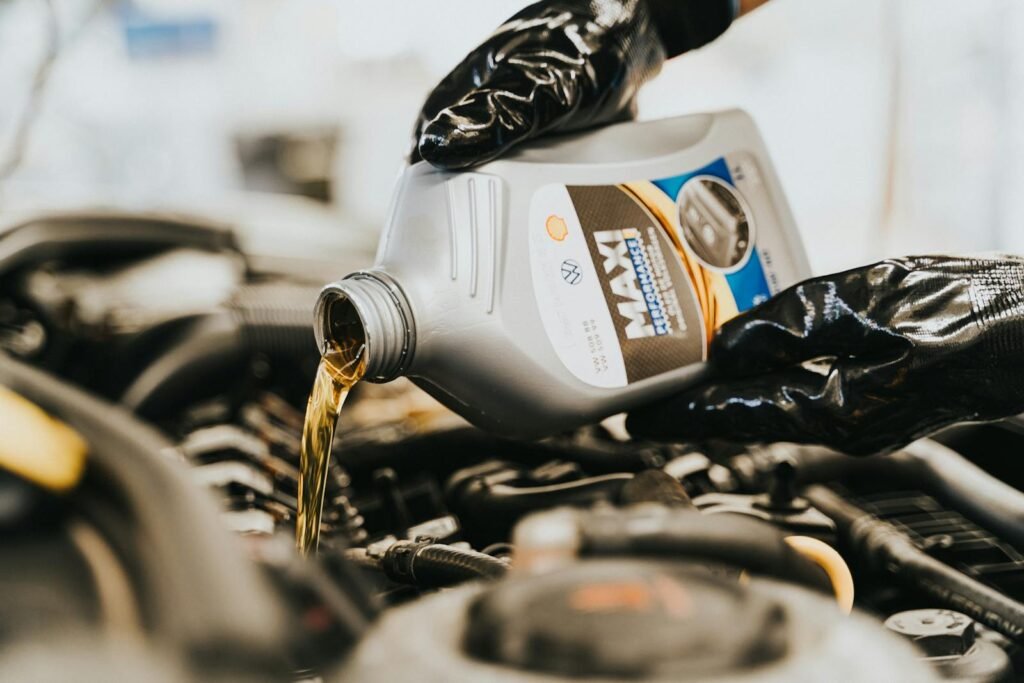Transmission oil lubricates the transmission system, while engine oil lubricates the engine’s moving parts. Both are crucial for vehicle performance and longevity.
Transmission oil reduces friction and wear within the transmission. It ensures smooth gear shifts and prevents overheating. Engine oil, on the other hand, protects the engine’s components from wear and tear. It also helps in maintaining optimal engine temperature. Regularly checking and changing both oils is essential for a vehicle’s health.
Neglecting either can lead to severe mechanical issues and costly repairs. Understanding the differences helps in proper vehicle maintenance. Always use the recommended oil types for your specific vehicle model. Proper oil care can extend your vehicle’s lifespan and improve its performance.
Engine Oil Basics

Understanding the basics of engine oil is crucial for vehicle maintenance. Engine oil ensures the smooth operation of your car’s engine. It keeps the engine parts lubricated and prevents wear and tear. Let’s delve into the essentials of engine oil.
Function In The Engine
Engine oil plays a vital role in your engine’s performance. Here are some key functions:
- Lubrication: Reduces friction between moving parts.
- Cooling: Helps dissipate heat from engine components.
- Cleaning: Removes dirt and debris from engine parts.
- Sealing: Helps seal gaps between piston and cylinder walls.
- Corrosion Prevention: Protects engine parts from rust.
Types Of Engine Oil
There are different types of engine oil, each with unique characteristics:
| Type | Description |
|---|---|
| Conventional Oil | Basic oil suitable for light-duty vehicles. Affordable but requires frequent changes. |
| Synthetic Oil | Engineered for high performance. Offers better protection and longer intervals between changes. |
| High-Mileage Oil | Designed for engines with over 75,000 miles. Contains additives to reduce leaks and oil consumption. |
| Blend Oil | A mix of synthetic and conventional oils. Provides good performance and affordability. |
Choosing the right type of oil can enhance your engine’s lifespan. Always refer to your vehicle’s manual for recommendations.
Transmission Oil Basics

Understanding the basics of transmission oil is crucial for car maintenance. Transmission oil plays a key role in keeping the transmission system running smoothly. Let’s dive into its functions and types.
Function In The Transmission
The transmission oil lubricates the moving parts of the transmission. This helps in reducing friction and preventing wear and tear. It also cools the transmission by dissipating heat. The oil acts as a hydraulic fluid, aiding in gear shifts. Without it, the transmission would overheat and fail.
Types Of Transmission Oil
There are different types of transmission oil, each suited for specific transmissions.
| Type | Description |
|---|---|
| Automatic Transmission Fluid (ATF) | Used in automatic transmissions. It helps in cooling, lubrication, and gear shifts. |
| Manual Transmission Oil | Used in manual transmissions. It provides lubrication and reduces friction. |
| Synthetic Transmission Oil | Offers better performance and protection. Suitable for high-performance vehicles. |
| Multi-Vehicle Transmission Oil | Compatible with various types of transmissions. Ideal for diverse vehicle fleets. |
Choosing the right transmission oil ensures your transmission performs optimally. Always refer to your vehicle’s manual for the recommended type.
Key Differences
Understanding the key differences between transmission oil and engine oil is crucial for maintaining your vehicle. Both fluids play essential roles but serve very different purposes. This section will explore the composition and viscosity of each to help you understand their specific functions.
Composition
The composition of transmission oil and engine oil varies significantly. Transmission oil is specifically designed for the lubrication of gears and clutches. It contains special additives for friction control and heat resistance.
Engine oil, on the other hand, is formulated to lubricate engine components. It includes detergents, dispersants, and anti-wear agents. These additives help keep the engine clean and reduce wear and tear.
| Type of Oil | Main Function | Key Additives |
|---|---|---|
| Transmission Oil | Lubricates gears and clutches | Friction control, heat resistance |
| Engine Oil | Lubricates engine components | Detergents, dispersants, anti-wear agents |
Viscosity
Viscosity refers to the thickness and flow characteristics of the oil. Transmission oil typically has a higher viscosity compared to engine oil. This higher viscosity helps it to better lubricate the gears and provide necessary friction control.
Engine oil varies in viscosity depending on the type and climate. Thicker oils are used in warmer climates, while thinner oils are better for colder environments. This flexibility ensures that the engine components are well-lubricated under different conditions.
- Transmission Oil: Higher viscosity for gear lubrication.
- Engine Oil: Variable viscosity for different climates.
Maintenance Practices
Proper maintenance keeps your car running smoothly. Both engine oil and transmission oil need regular changes. Each type of oil has its own schedule for changes. Here are some key practices to follow.
When To Change Engine Oil
Engine oil needs changing every 3,000 to 5,000 miles. Check your car’s manual for the exact interval. Use the recommended oil type for your engine. Regular changes ensure your engine runs efficiently. Look for signs like dark oil or engine noise. These can indicate it’s time for a change.
When To Change Transmission Oil
Transmission oil has a longer lifespan than engine oil. Change it every 30,000 to 60,000 miles. Again, refer to your car’s manual for specifics. Using the right type of transmission fluid is crucial. Look for signs like slipping gears or strange noises. These can signal the need for a change.
| Oil Type | Change Interval | Signs for Change |
|---|---|---|
| Engine Oil | 3,000-5,000 miles | Dark oil, engine noise |
| Transmission Oil | 30,000-60,000 miles | Slipping gears, strange noises |
Regular maintenance saves you from costly repairs. Keep an eye on your oil levels. Follow these guidelines for a smooth ride.
Common Myths
Many car owners have misconceptions about transmission oil and engine oil. These myths can lead to improper maintenance and costly repairs. Let’s debunk some common myths.
Interchangeability
Some believe that transmission oil and engine oil are interchangeable. This is not true. Each type of oil serves a different purpose.
- Engine oil lubricates engine parts.
- Transmission oil lubricates transmission components.
Using the wrong oil can damage your vehicle. Always use the oil specified by your vehicle manufacturer.
Lifespan
Another myth is that both oils have the same lifespan. They don’t. The lifespan of these oils varies.
| Type of Oil | Typical Lifespan |
|---|---|
| Engine Oil | 3,000 to 5,000 miles |
| Transmission Oil | 30,000 to 60,000 miles |
Regular checks and timely changes can extend the life of both oils. Always follow your vehicle’s maintenance schedule.
Choosing The Right Oil

Choosing the right oil for your vehicle is crucial. Both transmission and engine oils are vital for smooth operation. They protect against wear, heat, and friction. Making the right choice ensures longevity and efficiency.
Manufacturer Recommendations
Manufacturers provide specific guidelines for oil types. Always check the owner’s manual. It will have the recommended oil specifications. Using the wrong oil can harm your vehicle.
Here are some common recommendations:
- Engine Oil: Look for API, ACEA, or ILSAC standards.
- Transmission Oil: Check for ATF, CVT, or manual transmission fluids.
Factors To Consider
Several factors influence oil choice. Consider the following:
- Climate: Cold climates need different oil than hot climates.
- Driving Conditions: City driving differs from highway driving.
- Vehicle Age: Older cars might need thicker oil.
- Oil Type: Synthetic oils offer better protection but cost more.
| Factor | Engine Oil | Transmission Oil |
|---|---|---|
| Climate | Consider viscosity for temperature extremes | Check for temperature-specific ATF fluids |
| Driving Conditions | High mileage oils for stop-and-go traffic | Heavy-duty ATF for towing |
| Vehicle Age | Thicker oil for older engines | Older transmissions might need specific ATF |
Choosing the right oil isn’t just about brand preference. It involves understanding your vehicle’s needs. Following the manufacturer recommendations and considering various factors can ensure your vehicle runs smoothly.
Frequently Asked Questions
Is Transmission And Engine Oil The Same?
Transmission oil and engine oil are not the same. Transmission oil lubricates gears; engine oil lubricates engine components.
Can Engine Oil Be Used As Transmission Fluid?
No, engine oil should not be used as transmission fluid. They have different formulations and purposes, risking severe damage.
Does Transmission Fluid Go In The Same Place As Engine Oil?
No, transmission fluid and engine oil go in different places. Transmission fluid goes in the transmission, while engine oil goes in the engine.
How Do I Know If I Need Transmission Fluid?
Check the transmission fluid level using the dipstick. Low levels, dark color, or burnt smell indicate a need for fluid.
Conclusion
Understanding the differences between transmission and engine oil is crucial for vehicle maintenance. Both play vital roles in performance. Regular checks and timely changes can extend the life of your car. Prioritize using the right type of oil for each component.
This ensures optimal functioning and reduces the risk of costly repairs.
